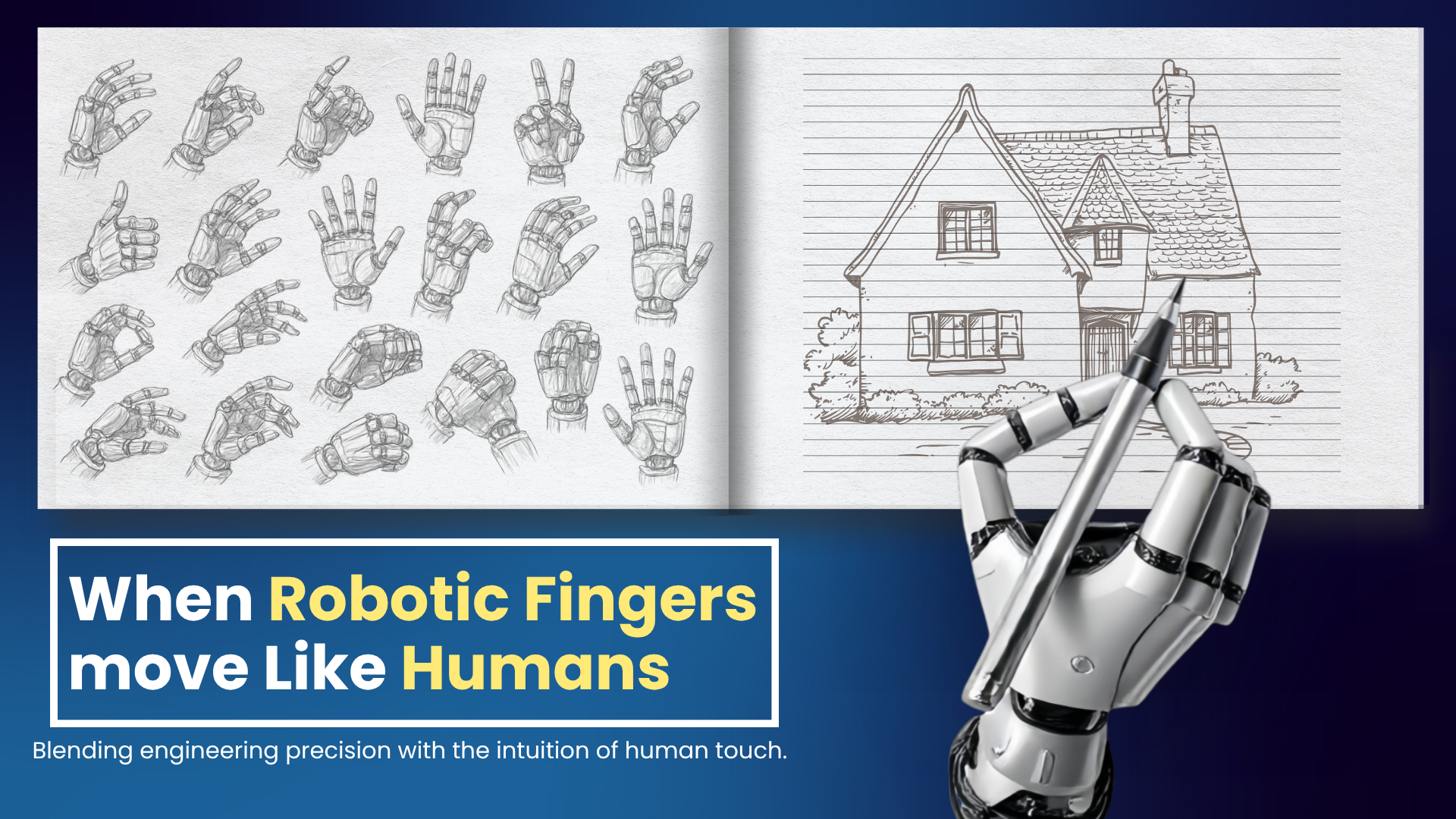
Can a machine, a robot, or any so-called non-living device feel sensations of touch? Can machines have feelings exclusive only to living beings? Now with the advent of electronic skins, or e-skins, it is possible for a robot or a machine to touch and feel as we do.
e-skins, are flexible, thin, and lightweight electronic devices or materials that can mimic sensations of touch just like the human skin. They can be useful in a wide variety of fields like robotics, healthcare, and environmental monitoring. With the help of e-skins, doctors can practice surgeries, and physicians can better understand their patients’ complications.
For the development of e-skins, flexible polymers like polydimethylsiloxane (PDMS), Poly(vinylidene fluoride) (PVDF), and thermoplastic polyurethane (TPU) have been explored.
Of these polymers, Poly(vinylidene fluoride) (PVDF) is chosen in this study as it is cost-effective and exhibits high inherent piezoelectricity (when a pressure is applied to a material to generate electric charge, it is known as piezoelectricity).
Two types of devices can be used to develop e-skins. These are – piezoelectric and triboelectric nanogenerator (TENG) devices.
While piezoelectric devices generate electric current by applying a pressure to the device, TENG devices generate electrical energy by friction between two materials.

In this study, a TENG device, single electrode triboelectric nanogenerator (SETENG) was developed by using h PVDF based composites to fabricate a skin touch-actuated biocompatible device. This is because PVDF has the advantage of being biocompatible and can easily be used on human skins without any side effects. A combination of PVDF in a SETENG is a less explored area of research.
Many studies have been done on enhancing the performance of PVDF through different techniques. Two factors are usually looked into for this purpose. These are:
- Improving the polarity of PVDF via reorientation of dipole arrangement from non-polar phase to polar phase.
- Enhancing the space charge polarization of the active layer which gives a strong positive effect on the output performance of triboelectric and hybrid nanogenerators.
In order to improve polarity, a piezoelectric filler was used to improve the piezoelectricity and dielectric polarization of PVDF based composites. For enhancing the space charge polarization, a conductive filler was further used. By tuning both of these parameters, significantly enhanced mechanical energy harvesting performance was achieved from the final SETENG.
In this study, the authors Mr. Abhishek Sasmal, Ms. Abirami Seetharaman, Ms. Swathi Sudhakar, and Prof. A. Arockiarajan from the Department of Applied Mechanics and Biomedical Engineering, Indian Institute of Technology Madras, Chennai, India (Prof. A. Arockiarajan is also affiliated with the Centre of Excellence in Ceramic Technologies for Futuristic Mobility, Indian Institute of Technology Madras, Chennai, India), and Ms. Payel Maiti from the Department of Metallurgical and Materials Engineering, Indian Institute of Technology Kharagpur, Kharagpur, India, have used a biocompatible piezoelectric material, zinc oxide (ZnO), with a biocompatible conducting material, silver (Ag) powder, along with PVDF. To the best of the authors’ knowledge, this is the first time such a combination has been done.
ZnO has been used to initially boost the dipolar polarization, and Ag powder in varied amounts have been used to achieve further performance enhancement via the introduction of space charge polarization.
In this study, the SETENGs have shown excellent human motion monitoring activity when directly attached to the human body. This has proven the suitable applicability of the developed devices in healthcare monitoring without any toxicity which has been further explored in wireless mode.
Dr. R. Boomi Shankar, Associate Dean, Research and Development, from the Department of Chemistry, Indian Institute of Science Education and Research (IISER), Pune, India, pointed out the important points of this research, thus acknowledging its importance with the following comments: “Mechanical energy harvesting materials have been at the forefront of research in the past five years or so. The paper by Arockiarajan and co-workers is an excellent piece of work, which, for the first time, demonstrates a ternary composite comprising of an organic polymer PVDF, an inorganic oxide ceramic ZnO and a metal Ag as a PENG and SETENG material. While the PENG and SETENG activity is governed by PVDF, its enhanced sensitivity is achieved by the polarity of ZnO, while the induced space-charge effects via the addition of conducting Ag metal improve the performance. It’s a very clever approach, sensitizing the community to pay attention to the addition of metals to modulate the properties of materials that are otherwise dielectric vis-à-vis insulating substances. Moreover, the choice of materials used in these composites makes them biocompatible for use in wearable electronics. The sizable outputs exhibited by these materials were demonstrated for various real-life applications involving energy harvesting and storage, particularly with human body motions, vibration sensing and remote motion sensing activities. This study is, therefore, a new benchmark in the search for new high-performance PENGs and TENGs that will revolutionize microelectronics for smart homes.”
Article by Akshay Anantharaman
Click here for the original link to the paper










